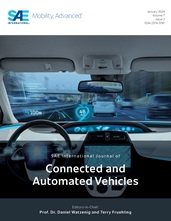To alleviate the problem of reduced traffic efficiency caused by the mixed flow
of heterogeneous vehicles, including autonomous and human-driven vehicles, this
article proposes a vehicle-to-vehicle collaborative control strategy for a
dedicated lane in a connected and automated vehicle system. First, the dedicated
lane’s operating efficiency and formation performance are described. Then, the
characteristics of connected vehicle formations are determined, and a control
strategy for heterogeneous vehicle formations was developed. Subsequently, an
interactive strategy was established for queueing under the coordination of
connected human-driven and autonomous vehicles, and the queue formation,
merging, and splitting processes are divided according to the cooperative
interaction strategy. Finally, the proposed lane management and formation
strategies are verified using the SUMO+Veins simulation software. The simulation
results show that the dedicated lane for connected vehicles can effectively
improve road traffic efficiency with a market penetration rate of 30%, but the
lane performance declines when the market penetration rate reaches 45%, mainly
manifested by a turning point in the average speed of vehicles. After setting up
the dedicated lane, the overall traffic efficiency increases by 58.8% according
to the simulation of vehicle formations driving on the dedicated lane at a
market penetration rate of 50%.
